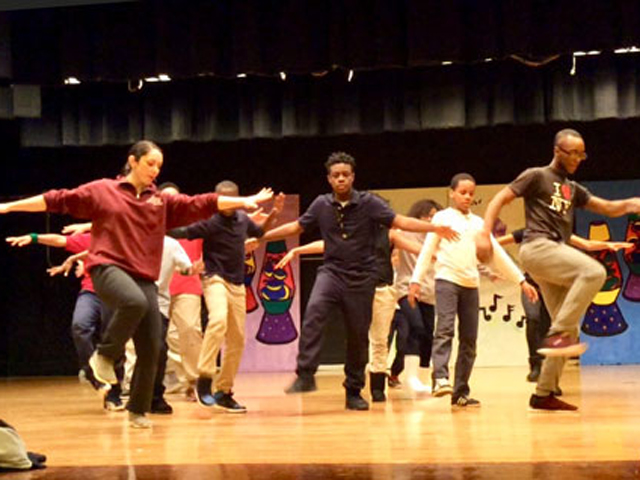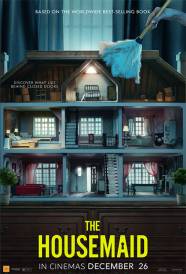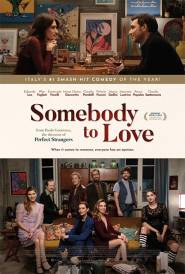Dance and Theatre Improve STEM

The Global Search for Education: Poetry, Science and Modern Dance – A Kinesthetic Learning Model
Sedentary teaching and listening can not only lose students' interest easily, but also deter students' creativity, homogenizing learners with individualities into one mold. How do we create new models of learning that can engage all students? As an example, how might theater and dance enhance science? STEAM (STEM+Art) education incorporates art into the curriculum, enabling students to "move around" both physically and academically, and actualize their individual potentials.
Timothy Weinstein is a STEAM teacher at Turner Intermediate School (Wilkinsburg Borough School District, Pennsylvania), who focuses on integrating arts into the STEAM Classroom. Timothy's story began a few summers ago when he took part in an arts integration workshop. During the program, a theater workshop focused on teaching kids the value of empathy; he realized that he could expand the strategy to other subjects, even the STEM subjects. In his school, many students still struggle with both academic challenges and behavioral issues, which is why incorporating art into the curriculum is paramount. While Weinstein still uses traditional teaching methods to prepare students for standardized tests, he believes that "utilizing a kinesthetic approach" that allows for creativity could be a game changer. Today, Weinstein's innovative program uses "6 Habits of the Mind" as a framework to support the curriculum.
The Global Search for Education is pleased to welcome Timothy Weinstein to talk about his unique and interdisciplinary approach to learning.
Interview with Timothy Weinstein
Question: Timothy, please walk us through the process you use in your model.
Timothy Weinstein: I want to first clarify that this approach isn't used every day and was used for a special arts integration project. No two lessons are the same and many different strategies are used. A typical lesson starts with a brief video to introduce an academic concept. Students then warm up their bodies with the resident artist, followed by a slightly more in-depth discussion of the academic concept. Sometimes, the students are given a group task in which they use dance or theater to demonstrate their understanding of the topic. Other times, students work with the resident artist to learn a dance that demonstrates the topic. Each lesson always ends with students performing their gestures as a part of a summary discussion of what they have learned.
Question: What do you think is unique about your approach? How does it enhance the education of core academic concepts?
Timothy Weinstein: While every classroom teacher teaches core academic concepts and many schools have classes to teach dance or theater, nobody combines the two. In fact, in this era in which budgetary concerns are the priority of schools, special area classes such as art and music are the first to be cut. Bringing arts into the traditional classroom is a strategy to preserve this slowly dying but essential component in a comprehensive educational program. Throughout the unit, I had many interesting discussions with the resident artists and we tried to find a balance that allowed them to teach their art while, at the same time, support the academic concepts students were learning in the classroom. As we all know, very little learning is done kinesthetically in traditional schools. Learning core academic concepts through dance and theater taps into many students' urges to move around. This approach allows for creativity, something that traditional curriculum stifles.
Question: Collaboration is one of the "6 Habits of the Mind" you use to frame learning in your classroom. What are the others?
Timothy Weinstein: Collaboration is one of the 6 Habits of Mind that I use to frame all ofthe learning in my classroom. The other 5 are Building, Coding, Perseverance, Problem-Solving and Investigating. Regardless of the activity or project, students are expected to collaborate with each other in my classroom. During this unit, students always work in groups to develop their gestures to show their understanding of a topic.
Question: How much student voice and choice are built into the program?
Timothy Weinstein: While students do not have a choice of which academic skill they will be learning, the expectation for creativity allows the students' voices to come through. In the arts integration project I mentioned, each gesture or action the students created to show their understanding of a topic was unique. The more voice and choice a student has, the more likely he or she is to "buy in" to an activity.
Question: How are you assessing the students?
Timothy Weinstein: Many people feel that issuing grades in a STEAM classroom stifles creativity and limits learning. Thus, when I design a project, I try to avoid giving students a fixed rubric to follow. Instead, I look at how each student demonstrates implementation of "the 6 Habits of Mind". For example, I would look at how much a student perseveres when a problem is challenging or how well they collaborate with their classmates. Even though students enter my classroom with vastly different skill sets and two students might produce very different finished projects, they might get the same "grade" in the end.
Question: What process would you recommend to another school who wants to be involved in your program?
Timothy Weinstein: I would recommend a 5-step process:
Locate a local arts partner.
Identify the academic concepts to be taught.
Create an appropriate schedule.
Gather and organize your media.
Step out of your comfort zone.
Question: How would you describe progress to date and what are the biggest challenges you've faced?
Timothy Weinstein: Aside from finding the money to pay the resident artists, the biggest challenge to successfully implement the arts integration unit was managing the logistics of the schedule. Not only did I have to be considerate of the resident artist's time, I also had to negotiate with other teachers to get the extra time needed for each lesson. Though I do not have quantitative data, I have plenty of qualitative data that shows that while many students were reticent at first to participate, by the end of the unit, the vast majority had bought in to the approach.
Question: How can you keep your program up to date and relevant?
MORE





